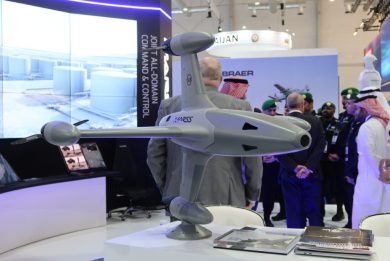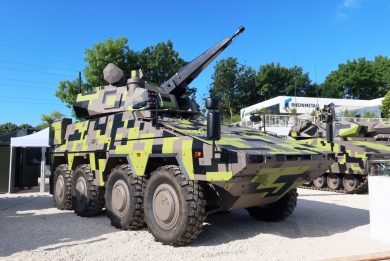Chasing unknown drones: new Direction Finders from Netline
The drone threat becoming a reality, the mix of known and unknown systems needs new approaches to ensure reliable detection with passive systems
The increasing presence of drone over the battlespace made the counter-UAS business as important as counter-IED has been in operations in Iraq and Afghanistan. Not surprisingly Netline Communications Technologies of Israel, an electronic warfare specialist in the jamming and C-IED fields, has also become a key player in the C-UAS domain.
The company is now launching its new family of products, capable to provide directional detection of drones, regardless their spectral signature. Today we find a mix of drones flying over the battlefield; “around 80% of them are known, therefore their signature is present in data bases, while 20% are unknown, usually more evolved military systems, however here in Israel 90% of them is unknown,” Shai Palti, the company CEO, tells EDR On-Line.
Netline therefore adopted a new approach in order to be able to detect those drones that are not available commercially, hence cannot be studied ahead of time and their “fingerprints” be collected into data bases. This is true for military UAS, as said, but also for hacked commercial drones, which modification put them into the list of unknowns.
While scanning the sky its direction-finding systems, which have the advantage of being totally passive compared to radars, classify airborne threats entering an established perimeter and categorise them as potential threats. For those whose signature is in the data base identification is easy. Those who are not in the DB are allocated to a unknown layer, which was added to the system command and control system, and their logs are analysed, first of all their video signals, thanks to an artificial intelligence-based algorithm developed by Netline and added to its systems. This innovative and adaptive algorithm recognizes common factors of airborne threats and indicates their existence without needing any specific data. “The hardware is pretty similar to that of earlier models of our direction finders, what we have completely modified is the algorithm approach,” Shai Palti explains.
EDR On-Line understood that one system is enough to obtain the incoming direction of the threat, however deploying two or more DF sensors in the covered area improves accuracy and provides the exact location of the incoming drone through the intersection of the two or more direction lines.
Netline Research and Development department is working on further improvements. “Our systems are currently fully automatic but are led by a human being, while in the future we aim at having them computer-led,” the CEO says, which will further reduce reaction time and lower the operators’ workload. Once detected it is then up to jammers to ensure soft kill, another field that sees Netline in the first row.
Of course, the virtual spiralling given by deployment, use, and lessons learned had a key role in the development of new systems, and this might be even more true with the new AI-based direction finders, where algorithms include quite probably some machine-learning capability that will allow increasing the knowledge on previously unknown threats.
“We already demonstrated our new products in several countries, and the market is responding very well,” Shai Palti concludes. Not only, hybrid C-IED/C-UAS systems are being developed, based on the same hardware that includes two different operation modes. In fact, UAS are the new IEDs, albeit mobile.
Photos courtesy Netline




